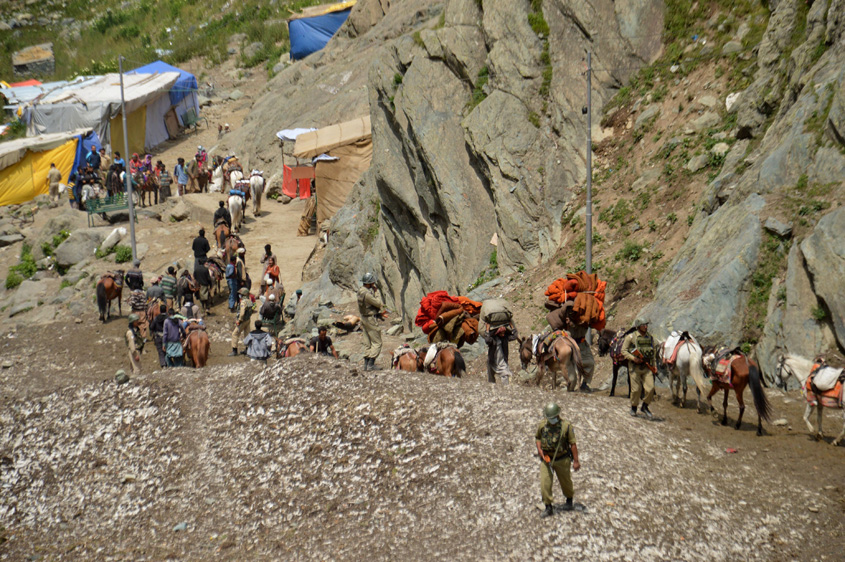The Amarnath Shrine Board has been asked by an environment group to limit the annual Amarnath pilgrimage to its traditional period of 15 days in order to save the fragile environment in Lidder and Sindh valleys. The call was issued by the Jammu Kashmir Coalition of Civil Society and EQUATIONS, a Bangalore based research and advocacy organisation working on the issues of tourism and ecology, after it came out with the “Amarnath Yatra: a Militarised Pilgrimage” report, based on a study of the Amarnath Yatra done between 2014 and 2016.
The report, which studied the deteriorating environmental conditions of the Amarnath yatra routes from Baltal and Chandiwari, warned of an environmental catastrophe in the Kashmir valley if the human footfall in the hills is not regulated. The findings are based on the data collected from different media reports, many RTIs filed in different wings of the state government, interviews of government officials in Kashmir, and interviews of relevant people in Kashmir, Jammu and New Delhi
The report has criticised the Shri Amarnath Shrine Board (SASB) of acting as a state within the state. The report has asked the state government to clip the wings of the board.
“Given the eco-sensitive and precarious nature of the region, and the critical role it plays in terms of providing water and environmental stability to the valley, there are serious implications of unregulated large visitations in the two valleys, Lidder and Sindh. Environmental concerns are linked to carrying capacity, sanitation and solid waste and other environmental concerns like seismicity of the area, impact on glaciers and high altitude flora and fauna,” the report reads.
The report further said, “Based on interviews with key personnel of the Armed forces, it appears that about 30,000 personnel were deployed in 2015 for the purpose of the Yatra. This is in addition to the camps of the Armed forces located on the route, who are additionally activated for the duration of the yatra.” The report also looks at the history of conflicts related to the yatra, particularly the Amarnath land row of 2008, and the role of militarisation.
Stressing on the solid waste management, the report said: “NGOs set up langars or community kitchens along the yatra route. 75% of the langar organisers come from New Delhi, Punjab, Haryana, Rajasthan and Uttar Pradesh. While langars are accountable to follow rules and regulations vis-a-vis menu, waste disposal practices and services that they are allowed/disallowed to provide, it was found that they violate most of them especially linked to the menu and waste disposal practices, leading to visible ecological degradation along the route. The share of Kashmiri tour and travel operators and hotel owners is minuscule since tour operators used are mostly from Jammu or outside the state and very few people stay in hotels due to the presence of the SASB camps along the route. The report contests claims of socio-religious organisations that people of Kashmir gain the most from the Yatra because of economic benefits.”

